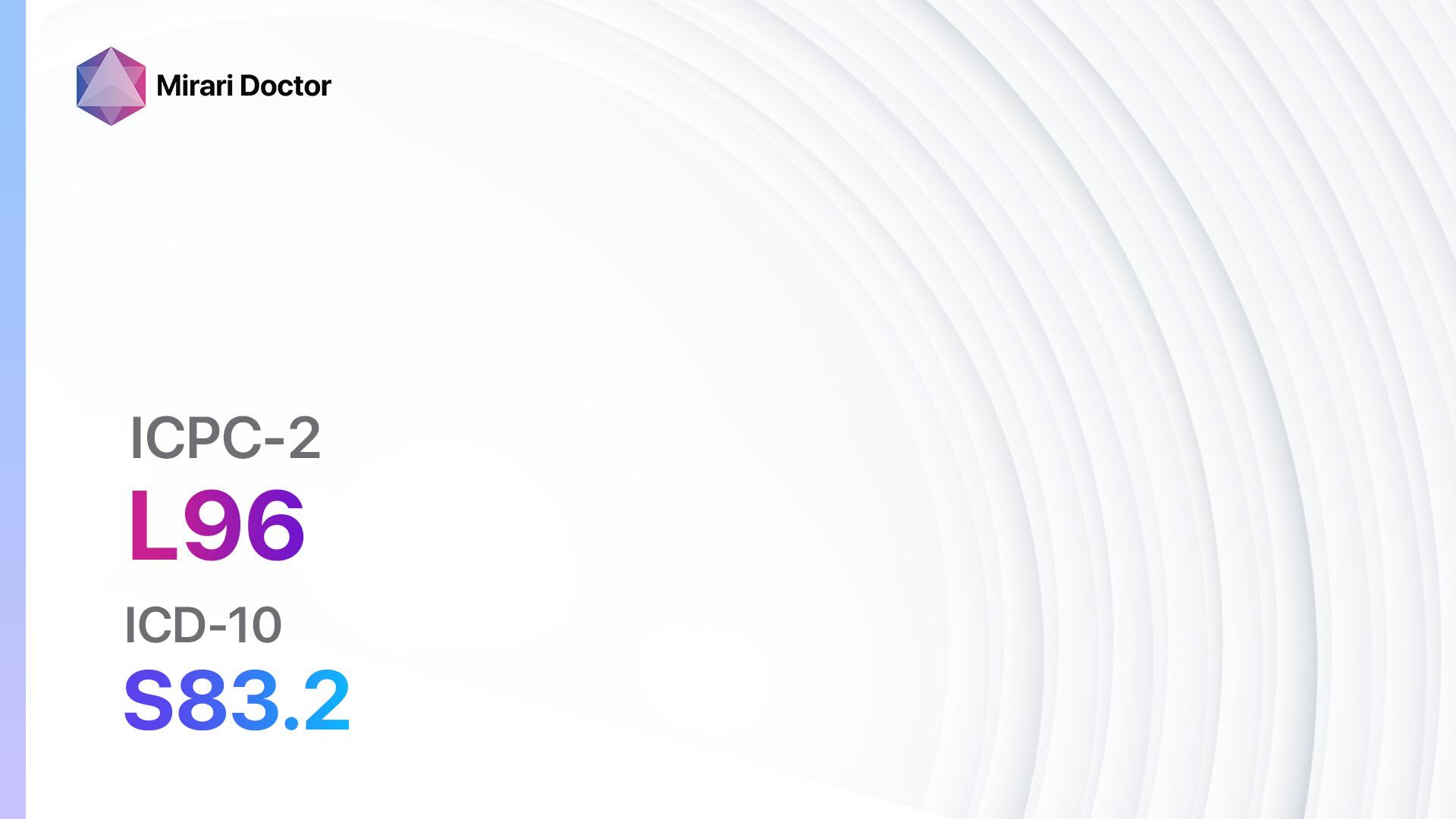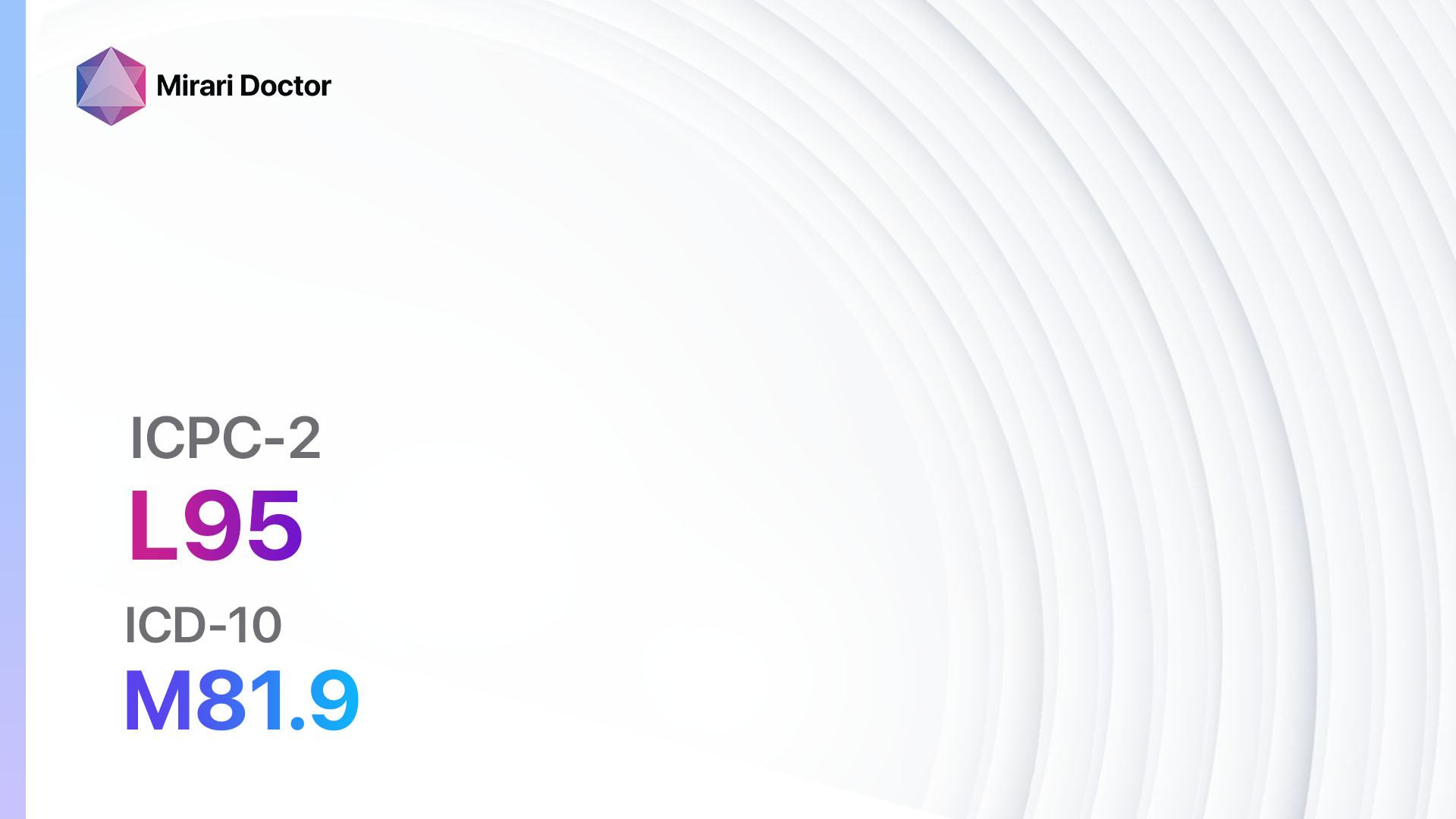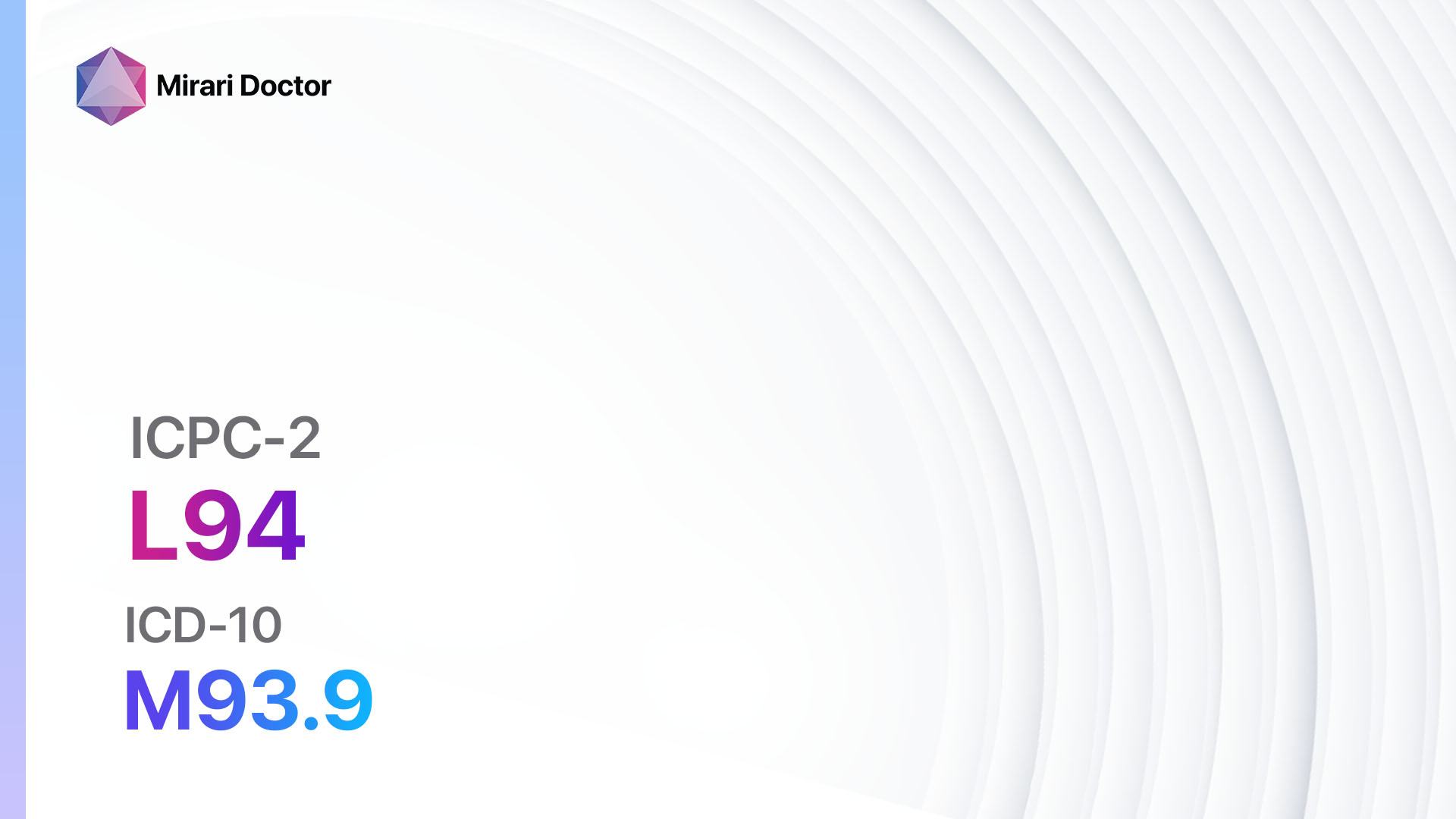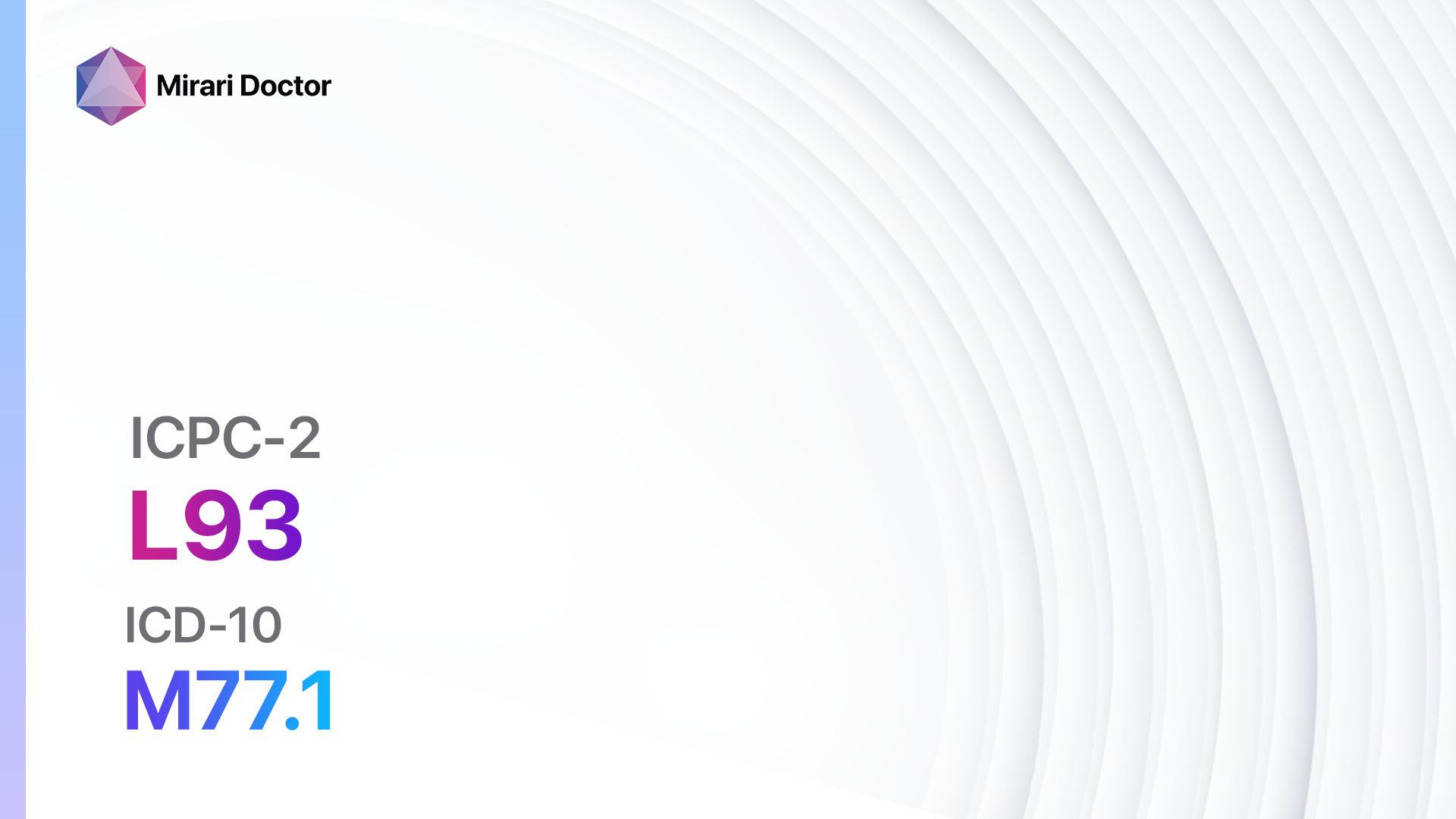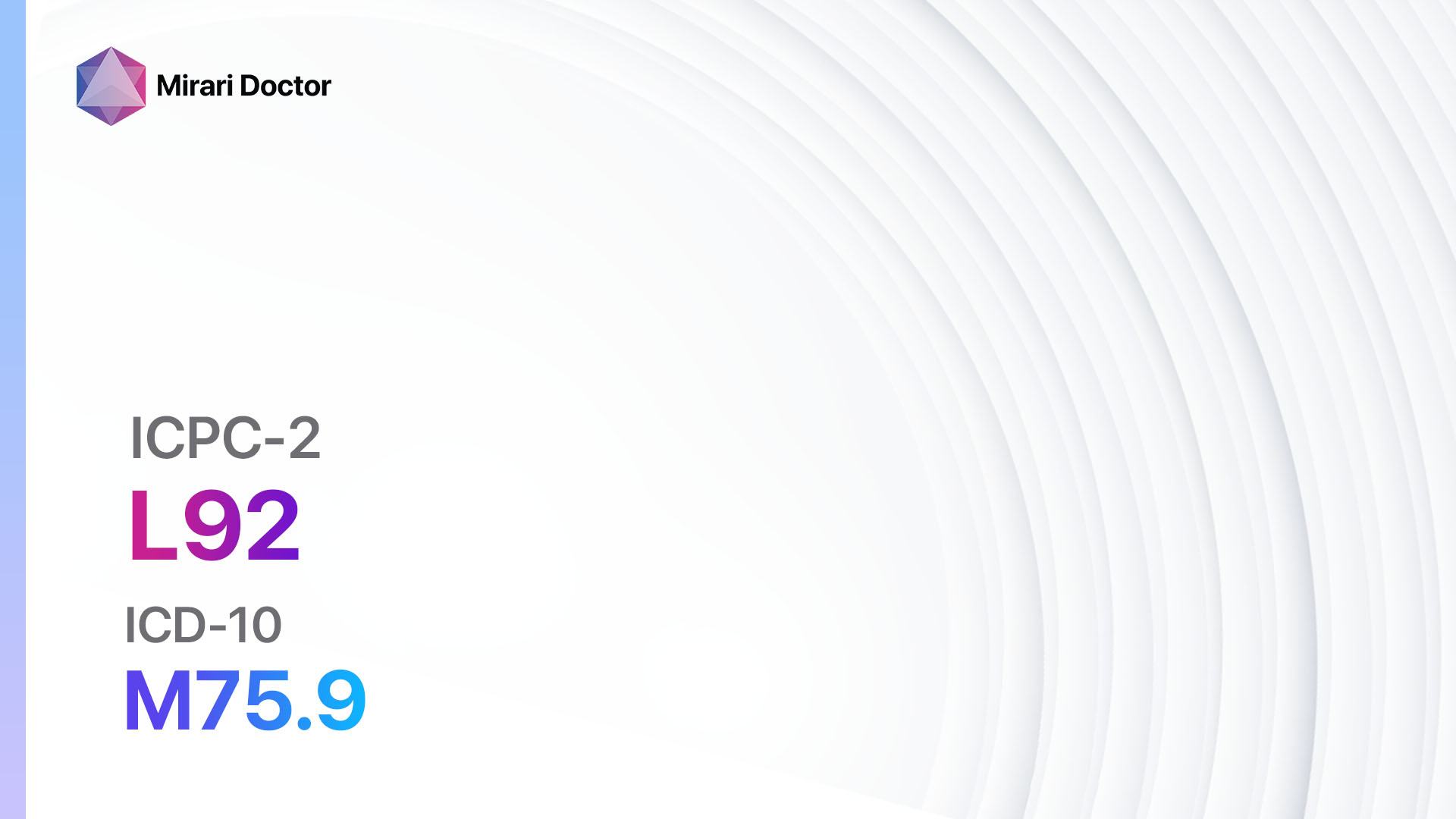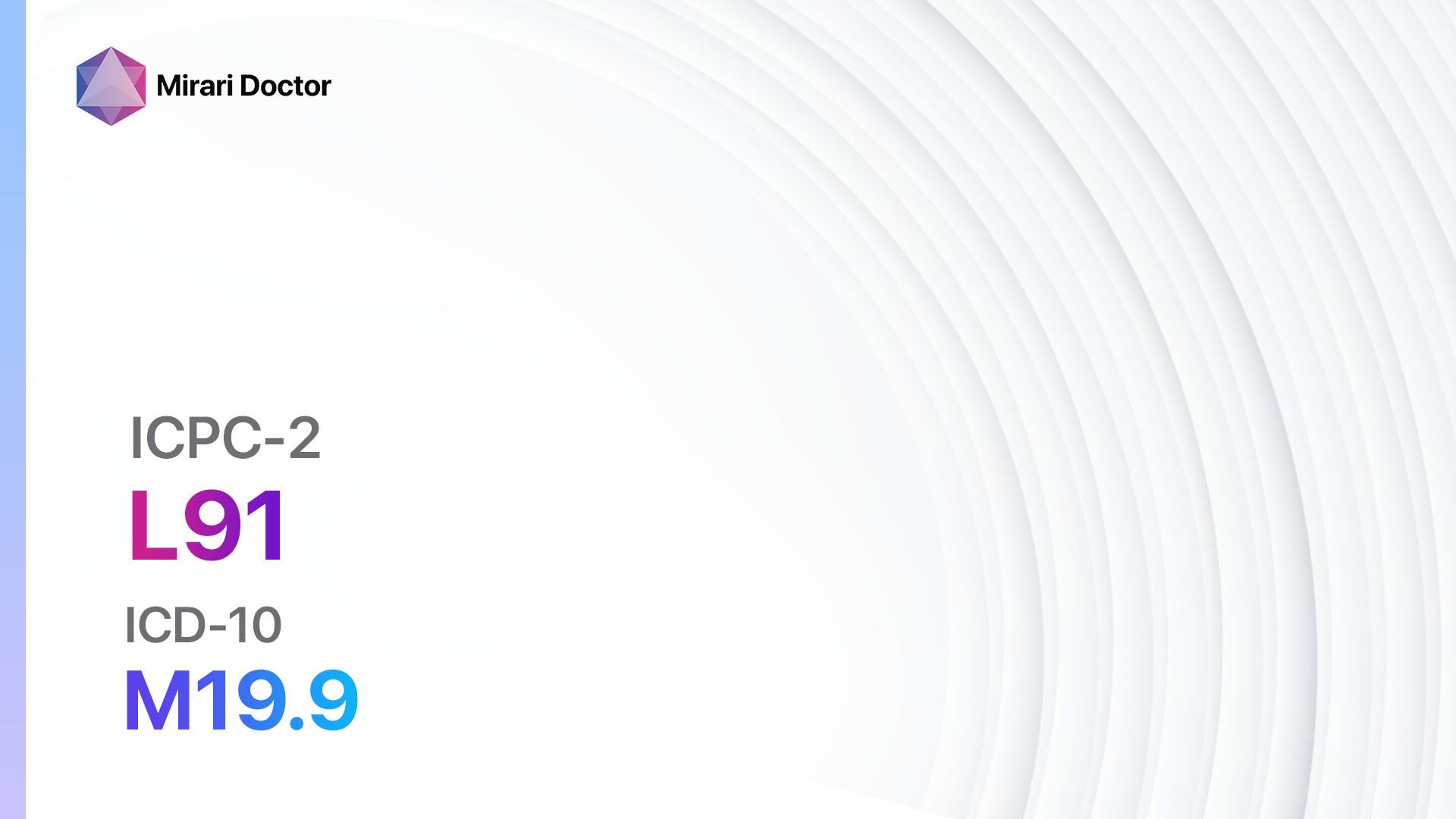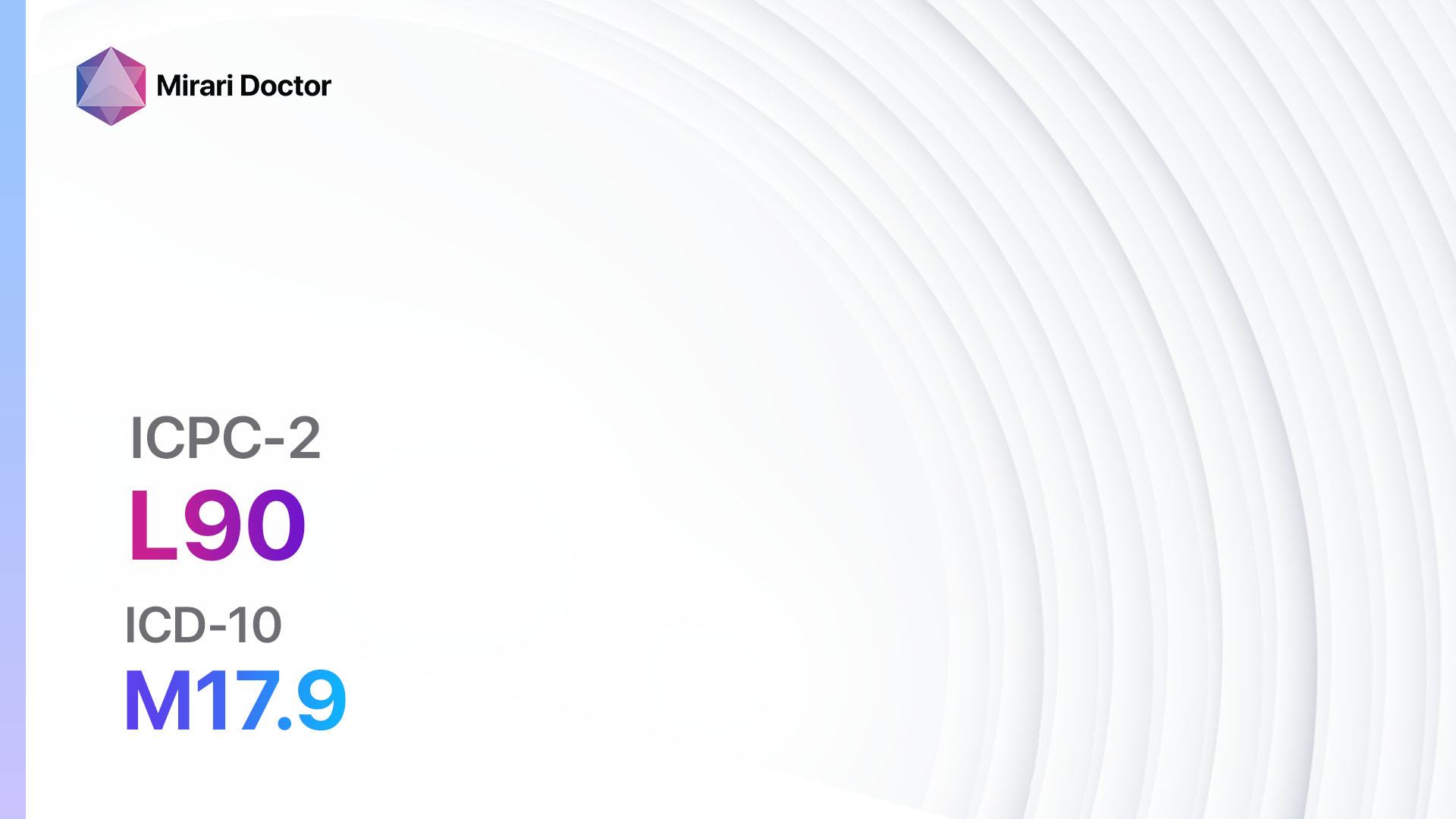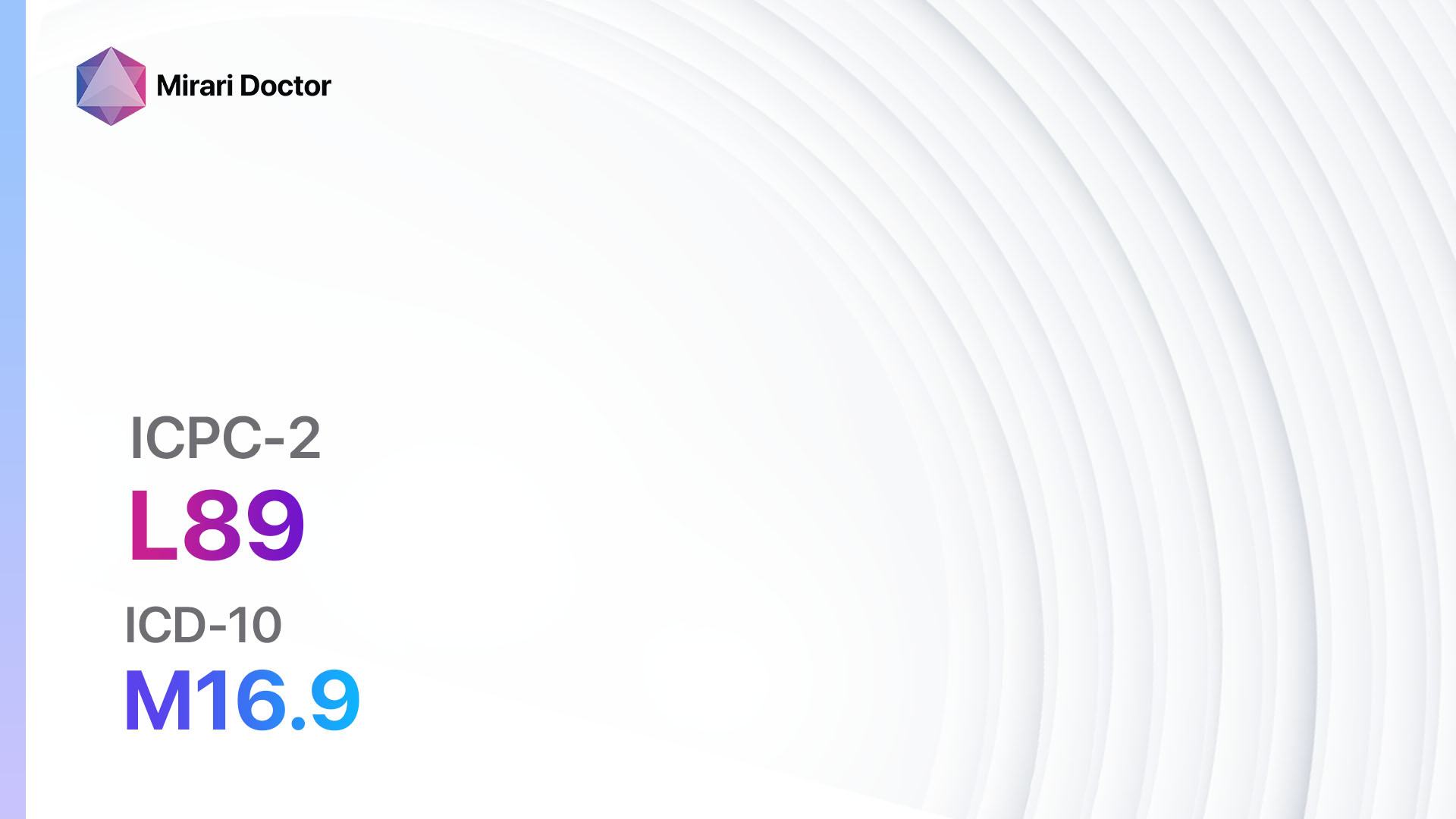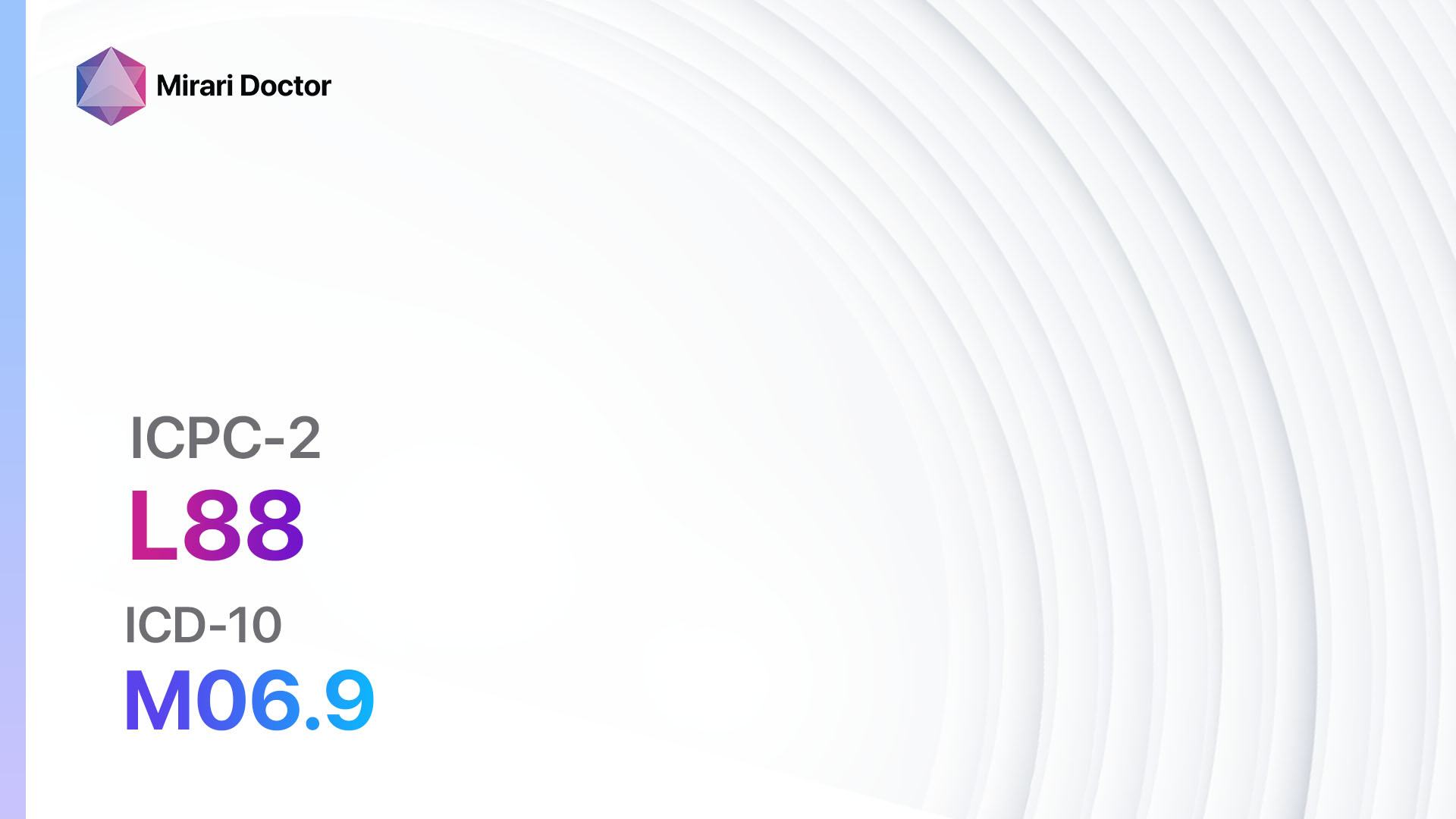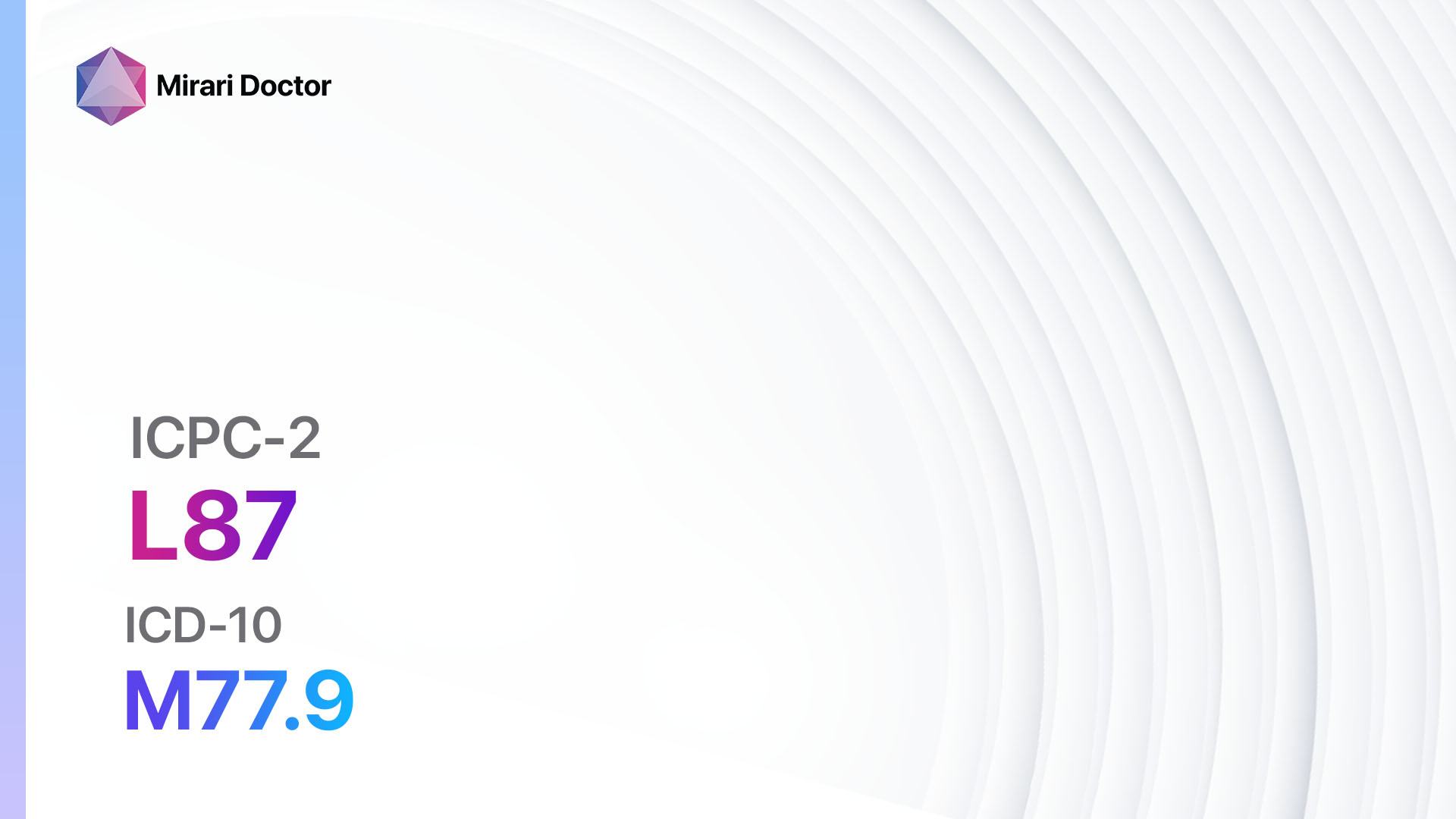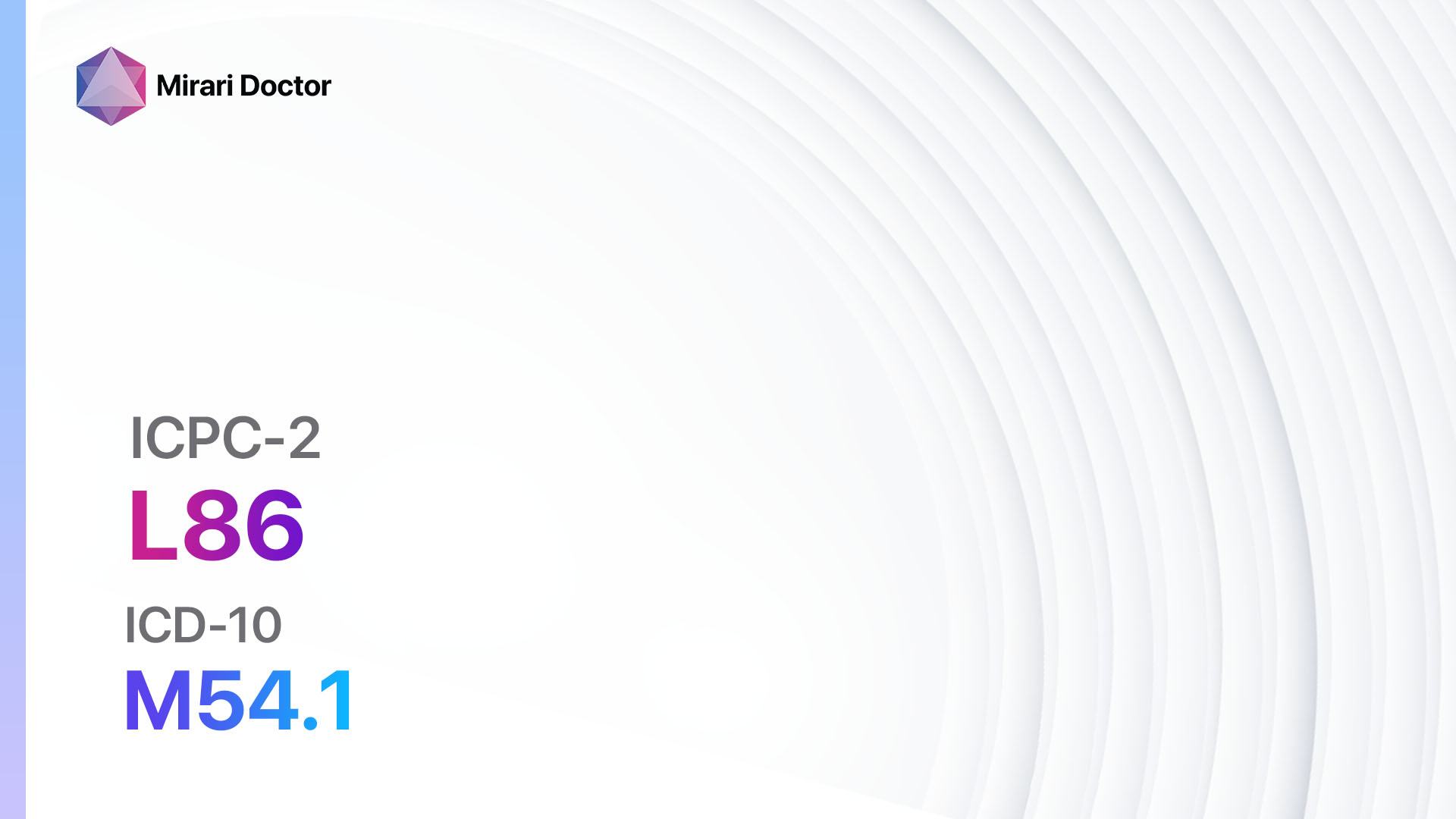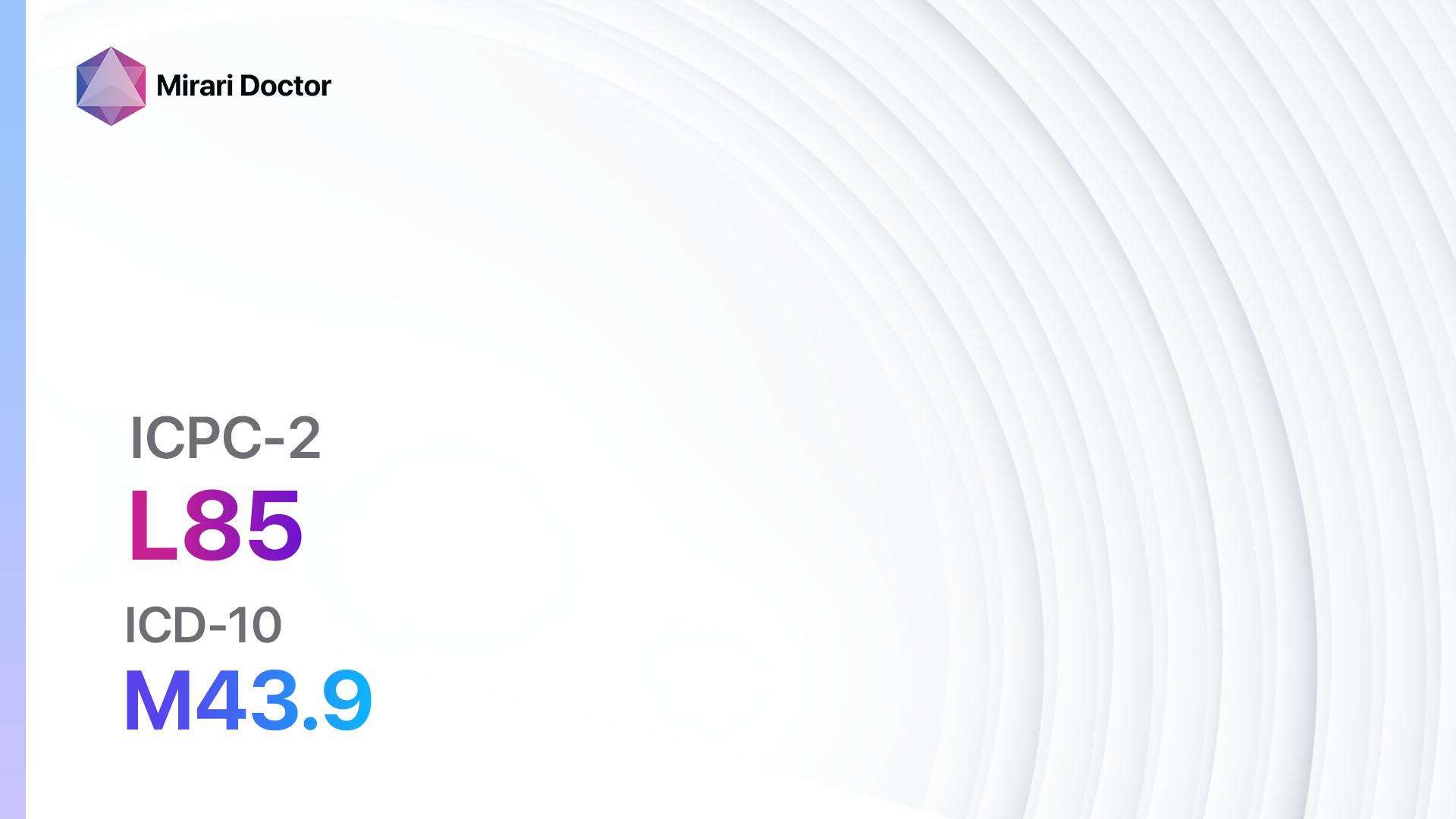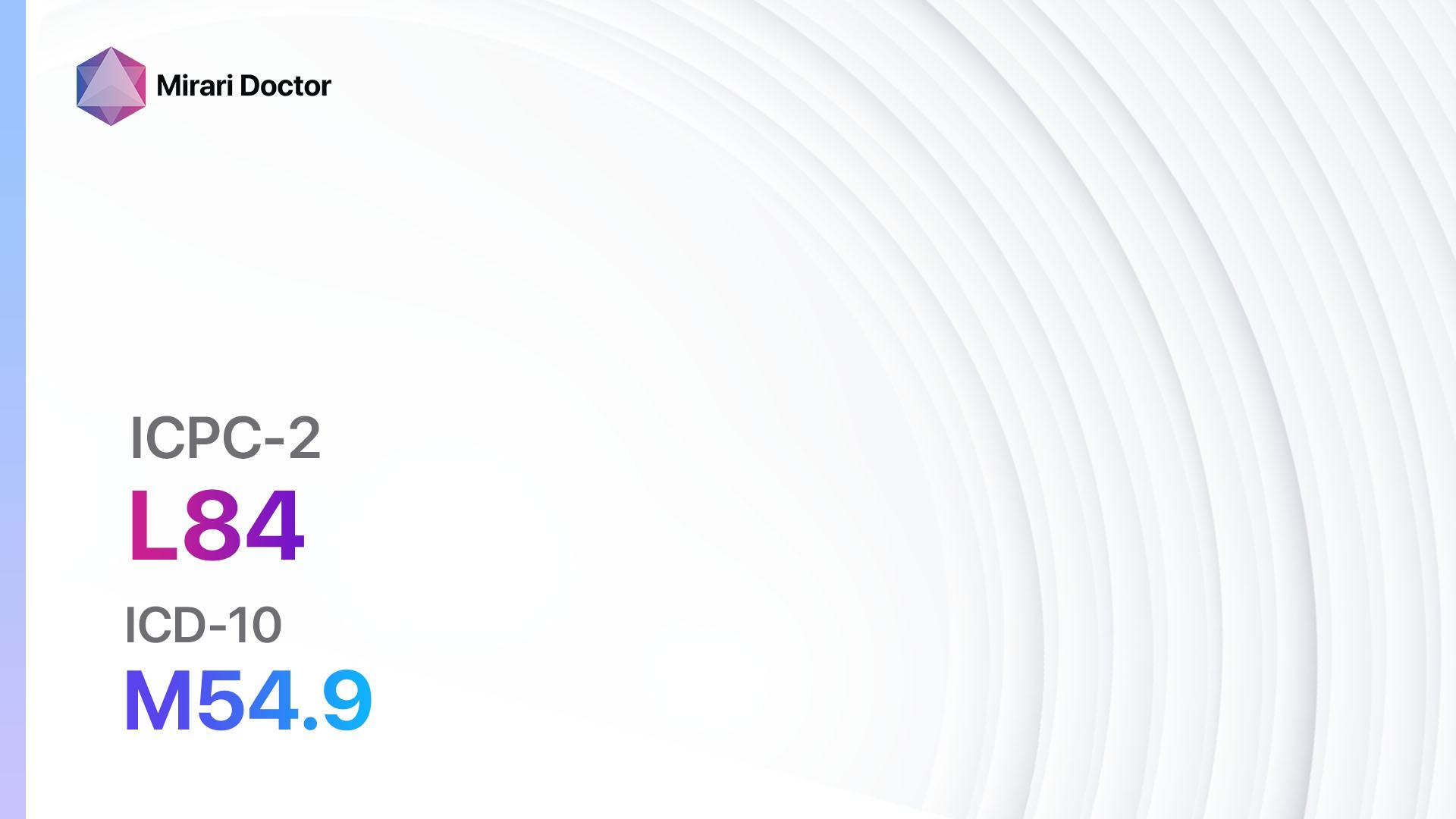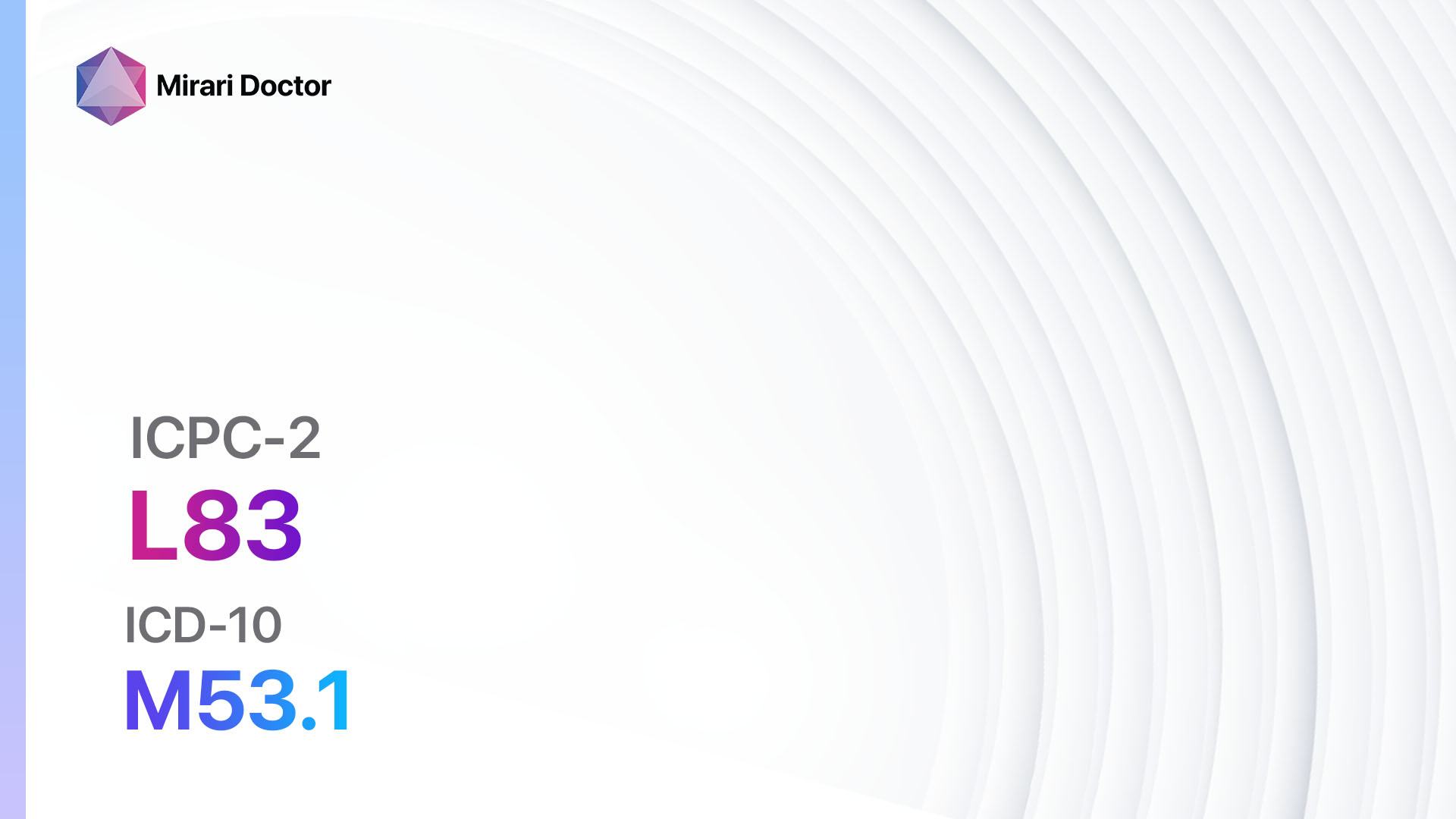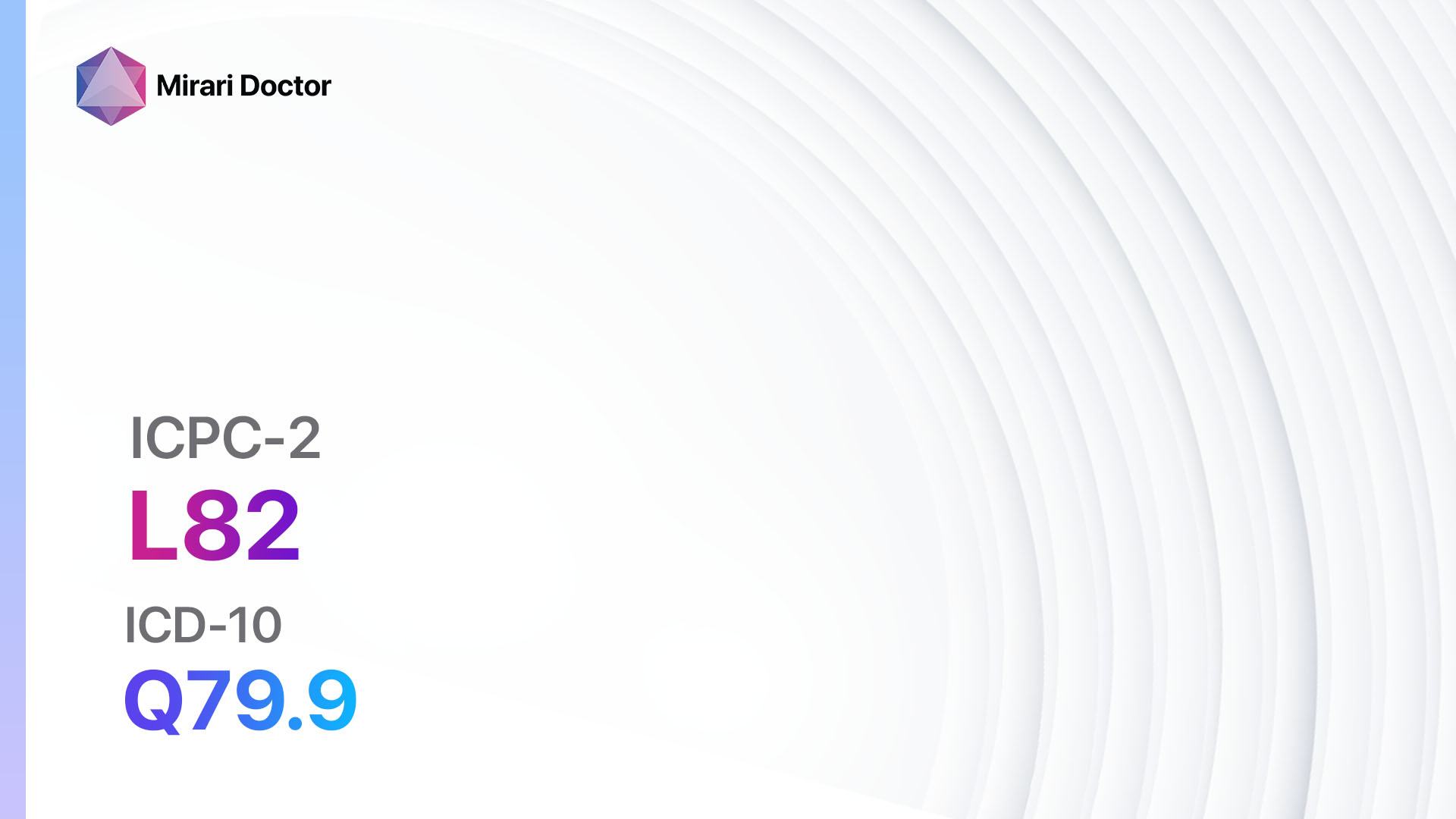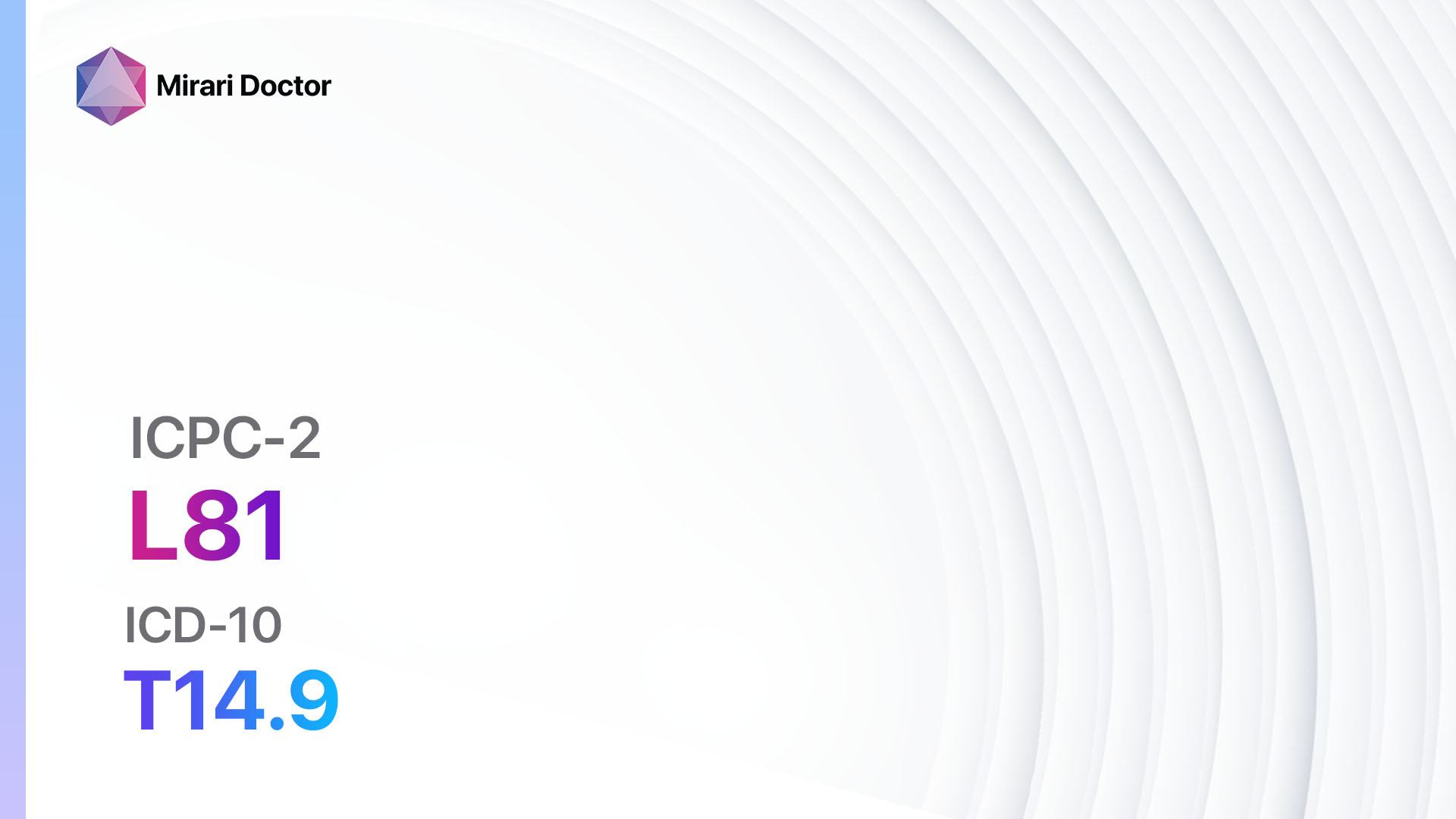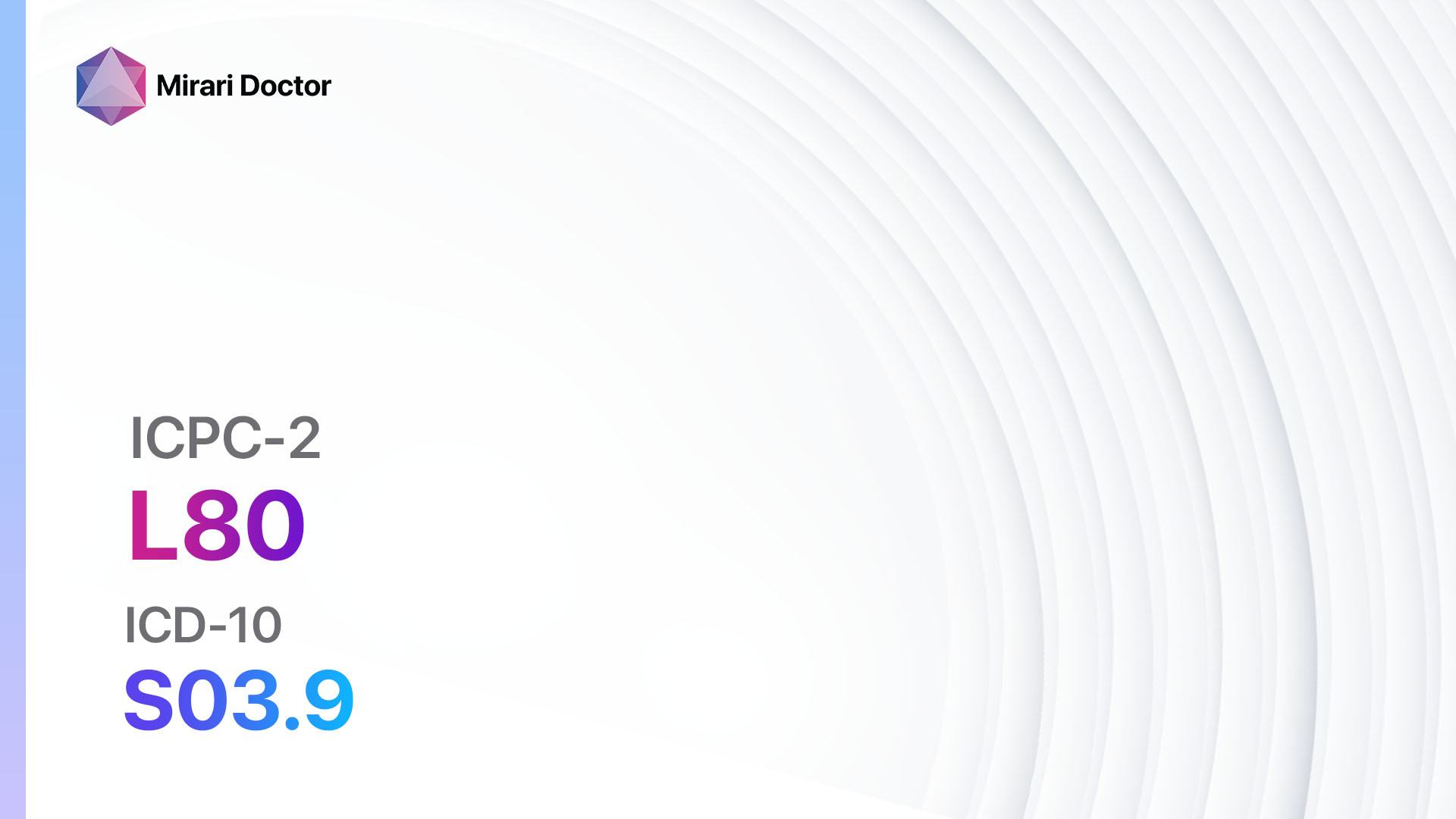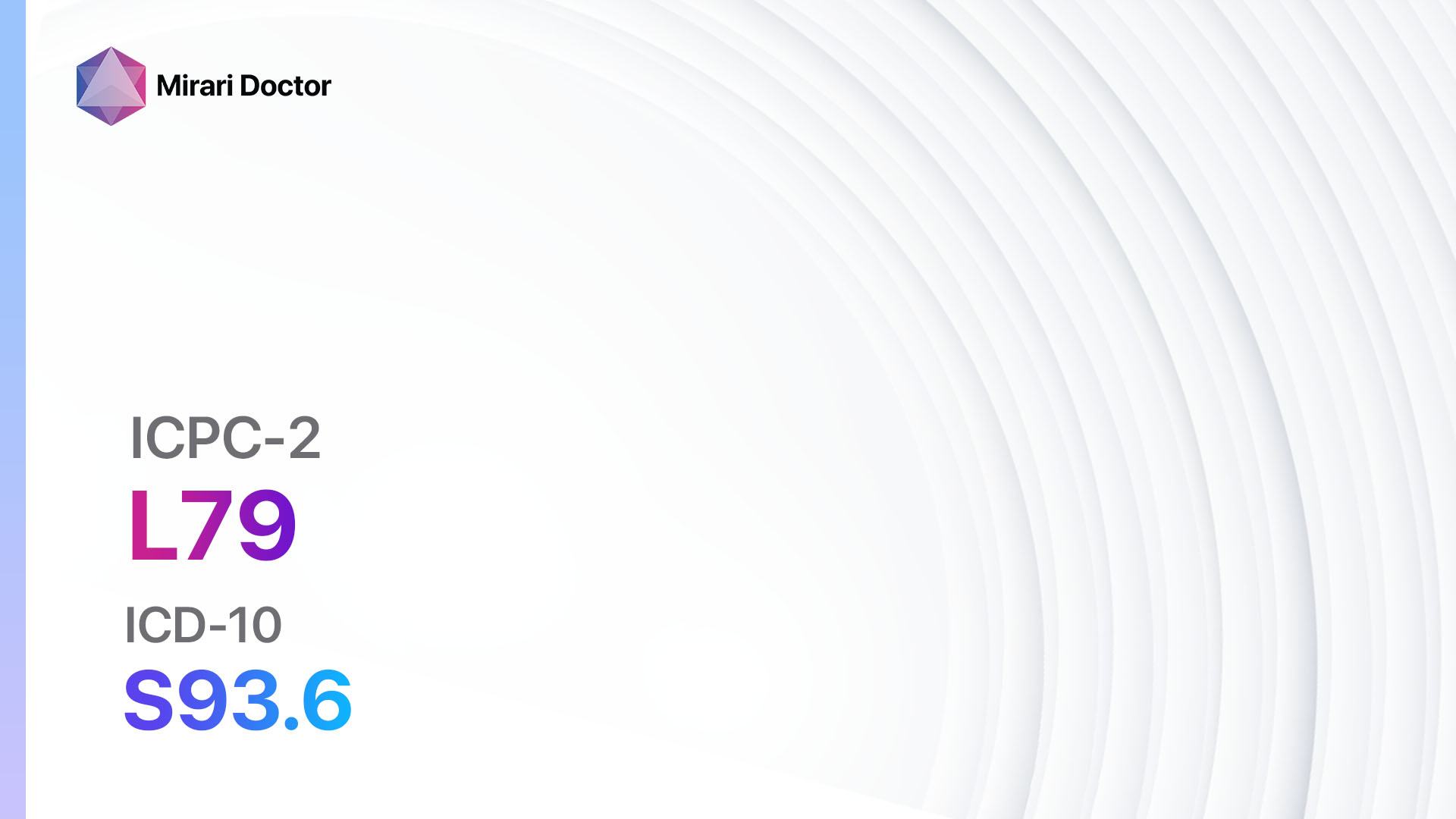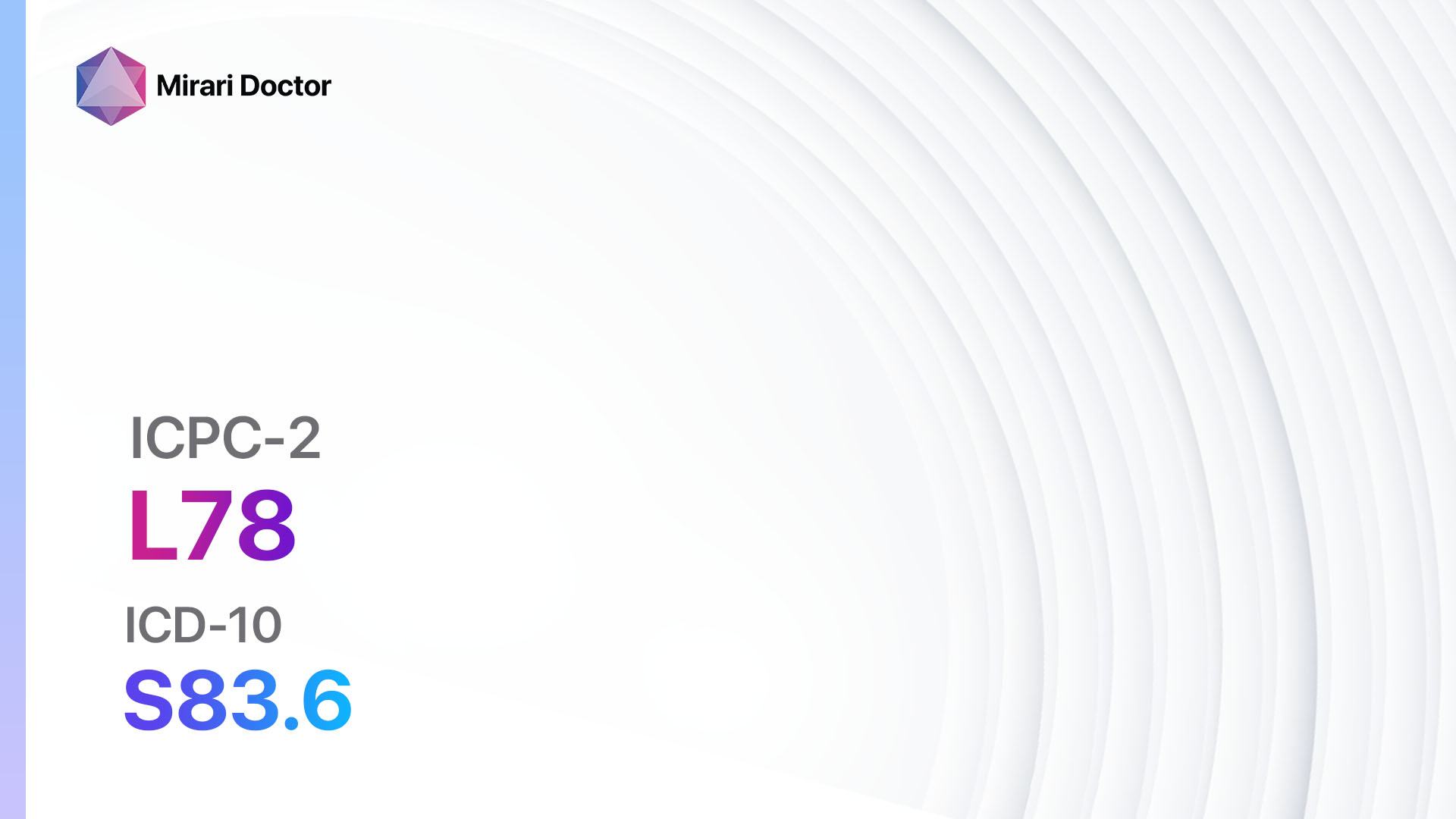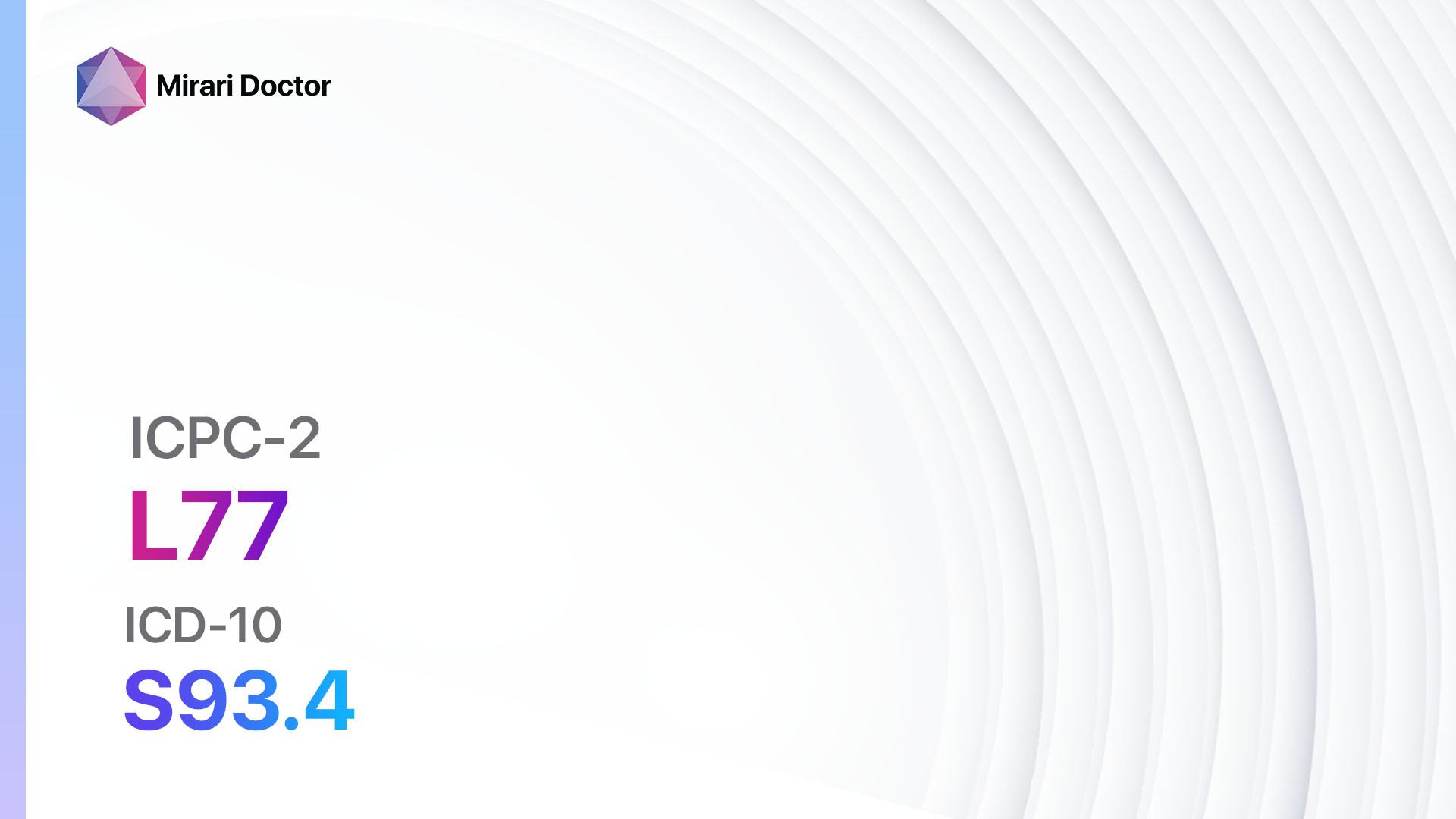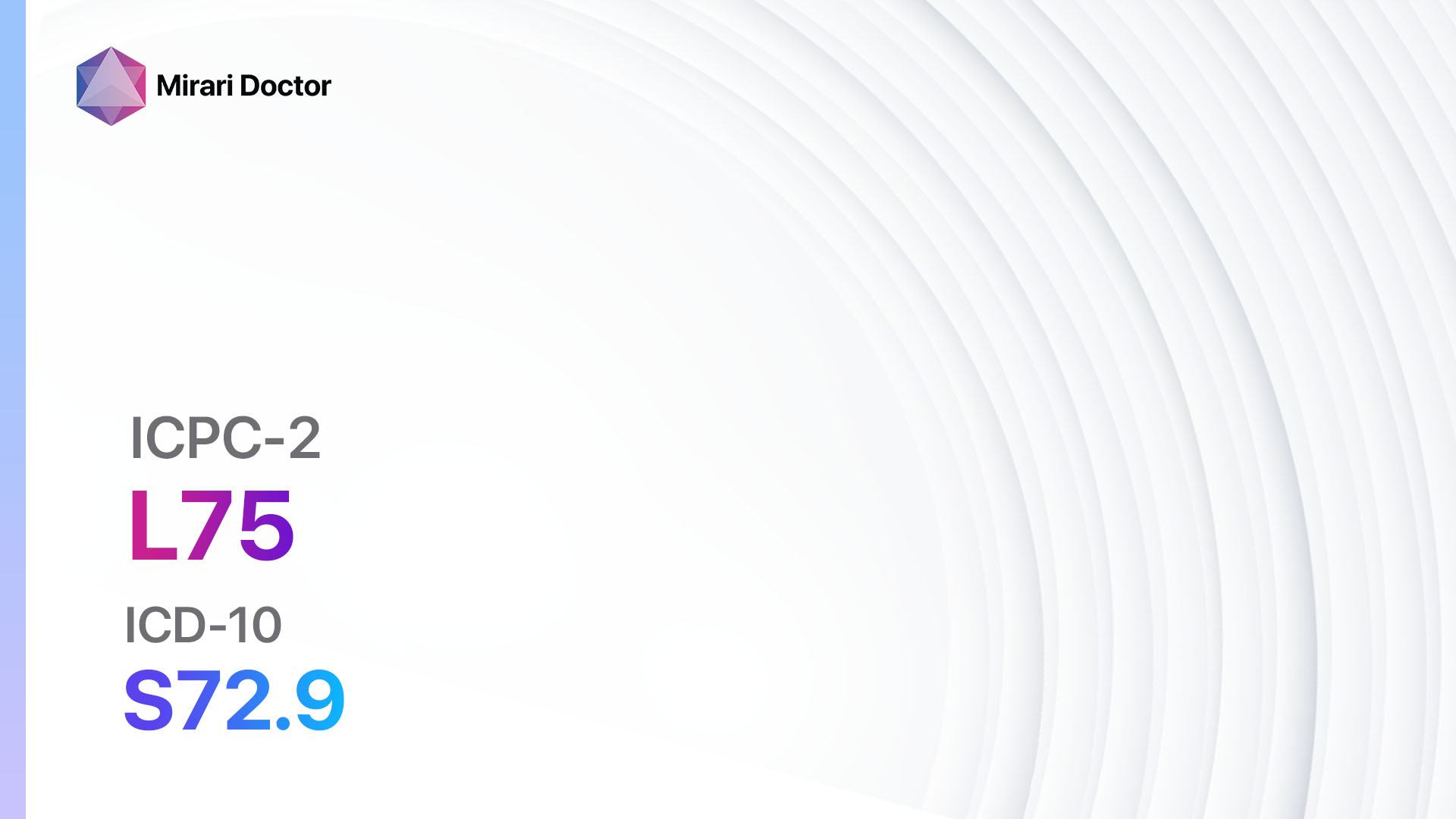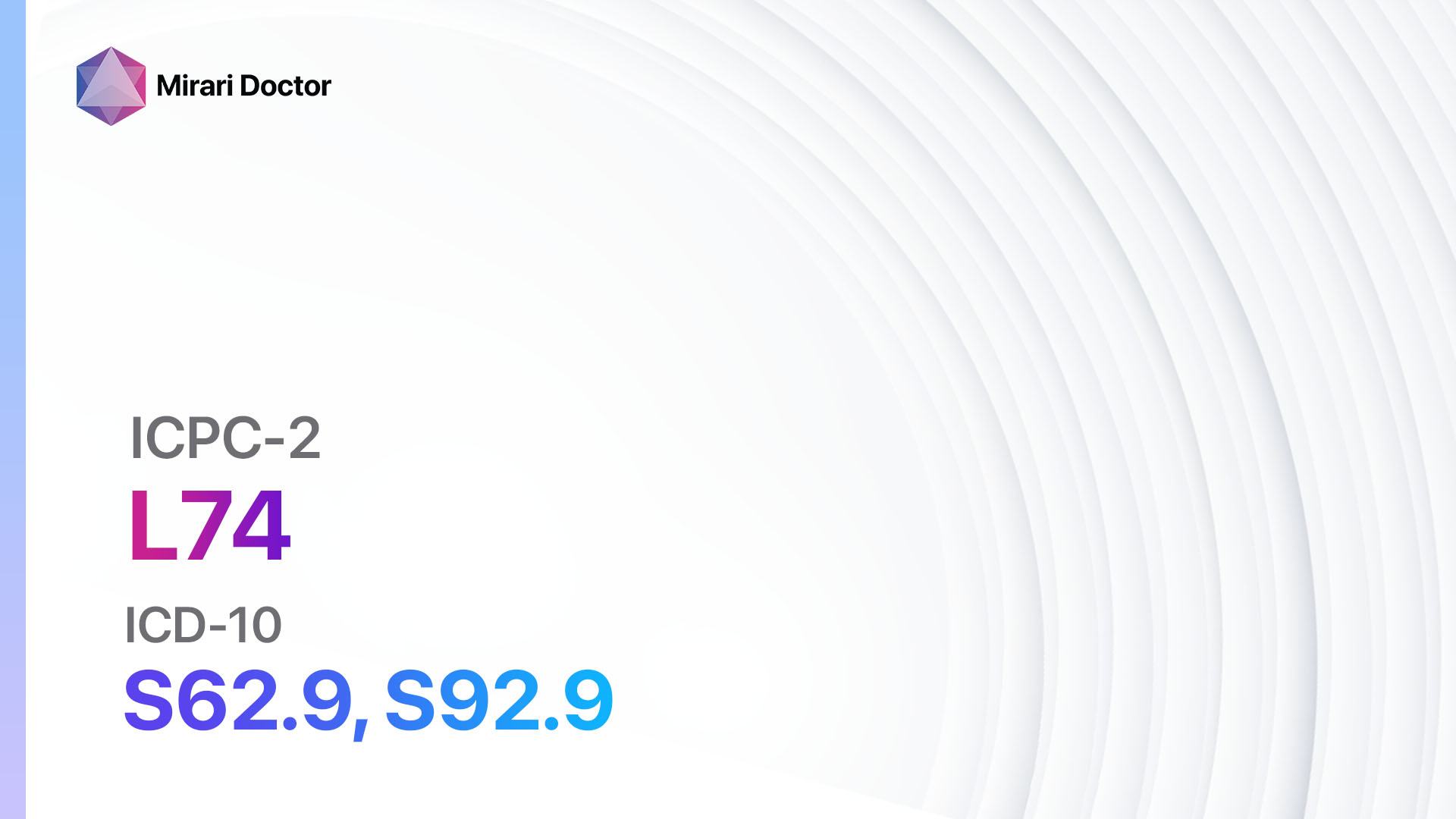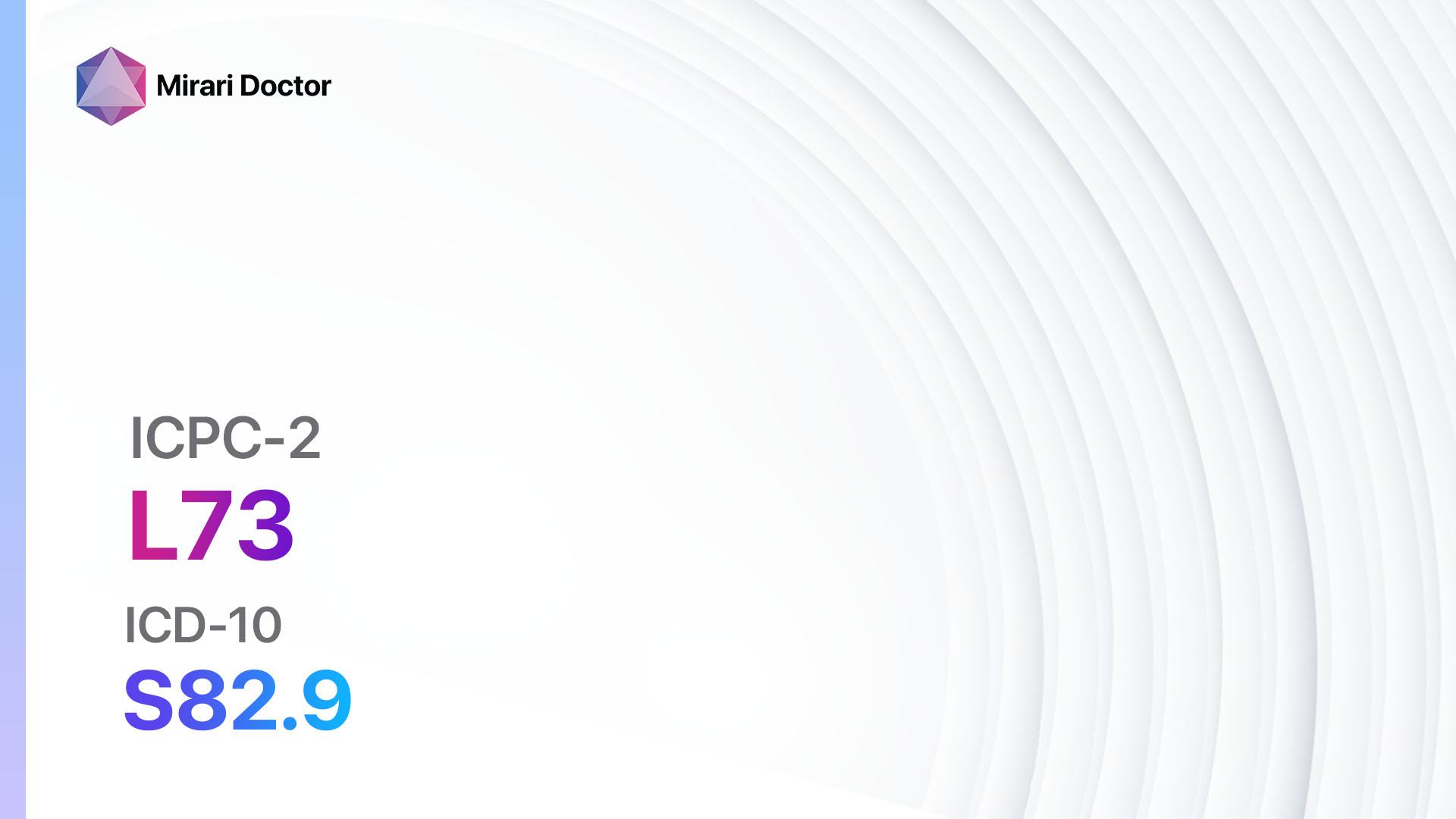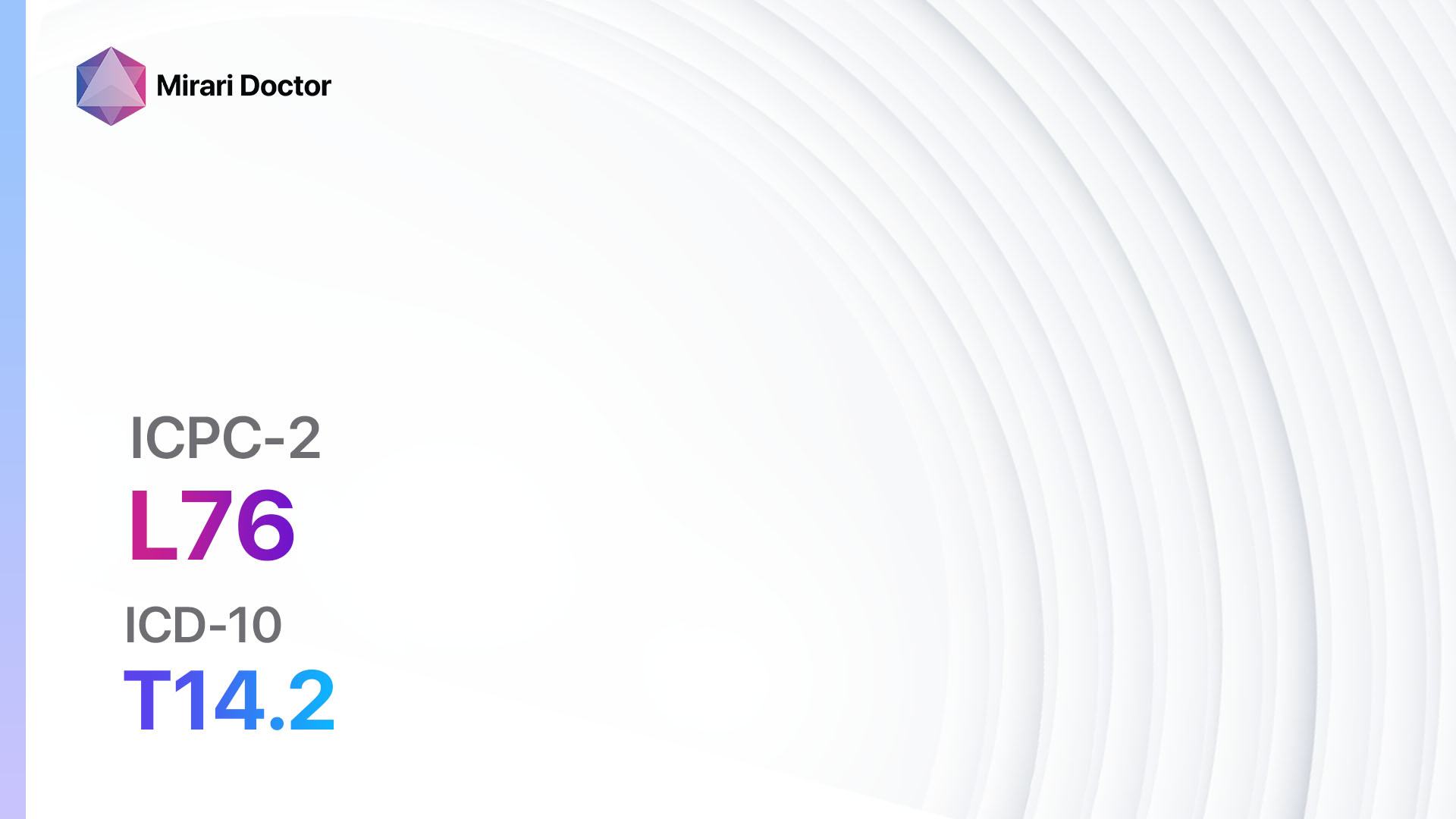
Introduction
Fracture: other refers to fractures that do not fall into specific categories such as hip fractures or wrist fractures. These fractures can occur in various bones throughout the body and may result from trauma, osteoporosis, or other underlying conditions[1]. The aim of this guide is to provide healthcare professionals with a comprehensive overview of the diagnostic steps, possible interventions, and patient education for managing fractures: other.
Codes
Symptoms
- Pain: Patients may experience localized pain at the site of the fracture[4].
- Swelling: Swelling may be present around the affected area[4].
- Bruising: Bruising or discoloration may occur due to blood vessel damage[4].
- Deformity: Fractures may cause visible deformity or misalignment of the affected bone[4].
- Limited range of motion: Fractures can restrict movement in the affected area[4].
- Difficulty bearing weight: Fractures in weight-bearing bones may make it challenging to put weight on the affected limb[4].
Causes
- Trauma: Fractures can result from direct trauma, such as a fall or impact[5].
- Osteoporosis: Weakened bones due to osteoporosis can increase the risk of fractures[6].
- Overuse: Repetitive stress or overuse of a particular bone can lead to fractures[7].
- Pathological conditions: Underlying conditions like bone tumors or infections can weaken bones and make them more susceptible to fractures[8].
Diagnostic Steps
Medical History
- Gather information about the patient’s symptoms, including the location and severity of pain, any history of trauma or falls, and any previous fractures[9].
- Inquire about any underlying medical conditions, such as osteoporosis or bone diseases[9].
- Assess the patient’s risk factors for fractures, such as age, gender, family history, and lifestyle factors (e.g., smoking, alcohol consumption)[9].
Physical Examination
- Perform a thorough physical examination, focusing on the affected area[9].
- Assess for signs of swelling, bruising, deformity, or misalignment[9].
- Evaluate the range of motion and strength in the affected limb[9].
- Palpate the area to identify any localized tenderness or crepitus (a grating sensation or sound)[9].
Laboratory Tests
- Blood tests: A complete blood count (CBC) may be done to assess for any signs of infection or anemia. Additionally, a metabolic panel can provide information about the patient’s overall health and any underlying conditions that may contribute to fractures[10].
- Bone density test: Dual-energy X-ray absorptiometry (DXA) scan can measure bone mineral density and help diagnose osteoporosis or assess the risk of fractures.
Diagnostic Imaging
- X-rays: X-rays are commonly used to visualize fractures and assess their severity. They can provide information about the location, type, and alignment of the fracture.
- CT scans: CT scans may be ordered for complex fractures or to evaluate fractures in areas that are difficult to visualize with X-rays, such as the spine or facial bones.
- MRI: MRI scans can provide detailed images of soft tissues, such as ligaments or tendons, and may be used to assess associated injuries or complications.
Other Tests
- Ultrasound: Ultrasound may be used to evaluate fractures in infants or young children, as their bones are still developing and may not be visible on X-rays.
- Bone scan: A bone scan can help identify stress fractures or fractures that are not visible on X-rays.
- Biopsy: In cases where a bone tumor or infection is suspected, a biopsy may be performed to obtain a tissue sample for further analysis.
Follow-up and Patient Education
- Provide the patient with information about the diagnosis, including the type and severity of the fracture.
- Discuss the treatment options and potential interventions.
- Educate the patient about the importance of immobilization, pain management, and follow-up appointments.
- Emphasize the need for adherence to treatment plans and any lifestyle modifications necessary for optimal healing.
Possible Interventions
Traditional Interventions
Medications:
Top 5 drugs for Fracture: other:
- Nonsteroidal anti-inflammatory drugs (NSAIDs) (e.g., Ibuprofen, Naproxen):
- Cost: Generic versions can be $3-$20/month.
- Contraindications: Active peptic ulcer disease, history of gastrointestinal bleeding, severe renal impairment.
- Side effects: Upset stomach, gastrointestinal bleeding, increased risk of cardiovascular events.
- Severe side effects: Kidney damage, liver toxicity, allergic reactions.
- Drug interactions: Anticoagulants, corticosteroids, selective serotonin reuptake inhibitors (SSRIs).
- Warning: Prolonged use may increase the risk of adverse effects.
- Opioids (e.g., Oxycodone, Hydrocodone):
- Cost: Generic versions can range from $10-$100/month.
- Contraindications: Respiratory depression, acute asthma, paralytic ileus.
- Side effects: Sedation, constipation, nausea.
- Severe side effects: Respiratory depression, addiction, overdose.
- Drug interactions: Benzodiazepines, alcohol, other central nervous system depressants.
- Warning: High potential for abuse and addiction.
- Muscle relaxants (e.g., Cyclobenzaprine, Methocarbamol):
- Cost: Generic versions can range from $10-$50/month.
- Contraindications: Severe liver impairment, history of drug addiction.
- Side effects: Drowsiness, dizziness, dry mouth.
- Severe side effects: Serotonin syndrome, allergic reactions.
- Drug interactions: Sedatives, antidepressants, antihistamines.
- Warning: Avoid alcohol and activities requiring mental alertness.
- Bisphosphonates (e.g., Alendronate, Risedronate):
- Cost: Generic versions can range from $10-$50/month.
- Contraindications: Esophageal abnormalities, hypocalcemia, inability to stand or sit upright for at least 30 minutes.
- Side effects: Upset stomach, heartburn, musculoskeletal pain.
- Severe side effects: Osteonecrosis of the jaw, atypical femur fractures.
- Drug interactions: Calcium supplements, antacids, NSAIDs.
- Warning: Take on an empty stomach with a full glass of water, remain upright for at least 30 minutes.
- Calcium and vitamin D supplements:
- Cost: Generic versions can range from $5-$20/month.
- Contraindications: Hypercalcemia, hyperparathyroidism.
- Side effects: Upset stomach, constipation.
- Severe side effects: Kidney stones, cardiac arrhythmias.
- Drug interactions: Thiazide diuretics, corticosteroids, antacids.
- Warning: Take with food to enhance absorption, avoid excessive intake.
Alternative Drugs:
- Calcitonin: A hormone that helps regulate calcium levels and may be used for pain relief in certain fractures. Cost: $100-$300/month.
- Selective estrogen receptor modulators (SERMs) (e.g., Raloxifene): Can help prevent bone loss and reduce fracture risk in postmenopausal women. Cost: $50-$200/month.
- Teriparatide: A synthetic form of parathyroid hormone that stimulates bone formation and may be used for severe osteoporosis or high-risk fractures. Cost: $1,000-$2,000/month.
- Denosumab: A monoclonal antibody that inhibits bone resorption and can be used for osteoporosis treatment. Cost: $1,000-$2,000/month.
- Calcium channel blockers (e.g., Amlodipine, Nifedipine): May be used to manage pain associated with fractures by reducing muscle spasms. Cost: $10-$50/month.
Surgical Procedures:
- Open reduction and internal fixation (ORIF): Involves surgically realigning the fractured bone and securing it with screws, plates, or rods. Cost: $10,000-$50,000.
- External fixation: Uses pins or screws inserted into the bone, which are then connected to an external frame to stabilize the fracture. Cost: $5,000-$20,000.
- Closed reduction: A non-surgical procedure where the fractured bone is manipulated back into its normal position without making an incision. Cost: $2,000-$10,000.
- Casting or splinting: Involves immobilizing the fractured bone with a cast or splint to allow for proper healing. Cost: $500-$2,000.
Alternative Interventions
- Acupuncture: May help reduce pain and promote healing. Cost: $60-$120 per session.
- Chiropractic care: Manual manipulation of the spine and other joints to alleviate pain and improve mobility. Cost: $50-$200 per session.
- Physical therapy: Exercises and techniques to improve strength, flexibility, and range of motion. Cost: $50-$150 per session.
- Herbal supplements: Some herbs, such as Arnica or Comfrey, may have anti-inflammatory properties and aid in healing. Cost: Varies depending on the specific supplement.
- Homeopathic remedies: Substances diluted to stimulate the body’s natural healing response. Cost: Varies depending on the specific remedy.
Lifestyle Interventions
- Rest and immobilization: Avoiding activities that may worsen the fracture and allowing time for healing.
- Weight-bearing exercises: Once cleared by a healthcare professional, gradually reintroduce weight-bearing exercises to promote bone strength and healing.
- Healthy diet: Ensure adequate intake of calcium, vitamin D, and other nutrients necessary for bone health.
- Smoking cessation: Smoking can impair bone healing, so quitting smoking is beneficial for fracture healing.
- Fall prevention: Taking measures to prevent falls, such as removing tripping hazards and using assistive devices if necessary.
It is important to note that the cost ranges provided are approximate and may vary depending on the location and availability of the interventions.
Mirari Cold Plasma Alternative Intervention
Understanding Mirari Cold Plasma
- Safe and Non-Invasive Treatment: Mirari Cold Plasma is a safe and non-invasive treatment option for various skin conditions. It does not require incisions, minimizing the risk of scarring, bleeding, or tissue damage.
- Efficient Extraction of Foreign Bodies: Mirari Cold Plasma facilitates the removal of foreign bodies from the skin by degrading and dissociating organic matter, allowing easier access and extraction.
- Pain Reduction and Comfort: Mirari Cold Plasma has a local analgesic effect, providing pain relief during the treatment, making it more comfortable for the patient.
- Reduced Risk of Infection: Mirari Cold Plasma has antimicrobial properties, effectively killing bacteria and reducing the risk of infection.
- Accelerated Healing and Minimal Scarring: Mirari Cold Plasma stimulates wound healing and tissue regeneration, reducing healing time and minimizing the formation of scars.
Mirari Cold Plasma Prescription
Video instructions for using Mirari Cold Plasma Device – L76 Fracture: other (ICD-10:T14.2)
| Mild | Moderate | Severe |
| Mode setting: 2 (Wound Healing) Location: 0 (Localized) Morning: 15 minutes, Evening: 15 minutes |
Mode setting: 2 (Wound Healing) Location: 0 (Localized) Morning: 30 minutes, Lunch: 30 minutes, Evening: 30 minutes |
Mode setting: 2 (Wound Healing) Location: 0 (Localized) Morning: 30 minutes, Lunch: 30 minutes, Evening: 30 minutes |
| Mode setting: 9 (Arthritis) Location: 0 (Localized) Morning: 15 minutes, Evening: 15 minutes |
Mode setting: 9 (Arthritis) Location: 0 (Localized) Morning: 30 minutes, Lunch: 30 minutes, Evening: 30 minutes |
Mode setting: 9 (Arthritis) Location: 0 (Localized) Morning: 30 minutes, Lunch: 30 minutes, Evening: 30 minutes |
| Total Morning: 30 minutes approx. $5 USD, Evening: 30 minutes approx. $5 USD |
Total Morning: 60 minutes approx. $10 USD, Lunch: 60 minutes approx. $10 USD, Evening: 60 minutes approx. $10 USD, |
Total Morning: 60 minutes approx. $10 USD, Lunch: 60 minutes approx. $10 USD, Evening: 60 minutes approx. $10 USD, |
| Usual treatment for 7-60 days approx. $70 USD – $600 USD | Usual treatment for 6-8 weeks approx. $1,260 USD – $1,680 USD |
Usual treatment for 3-6 months approx. $2,700 USD – $5,400 USD
|
 |
|
Use the Mirari Cold Plasma device to treat Fracture: other effectively.
WARNING: MIRARI COLD PLASMA IS DESIGNED FOR THE HUMAN BODY WITHOUT ANY ARTIFICIAL OR THIRD PARTY PRODUCTS. USE OF OTHER PRODUCTS IN COMBINATION WITH MIRARI COLD PLASMA MAY CAUSE UNPREDICTABLE EFFECTS, HARM OR INJURY. PLEASE CONSULT A MEDICAL PROFESSIONAL BEFORE COMBINING ANY OTHER PRODUCTS WITH USE OF MIRARI.
Step 1: Cleanse the Skin
- Start by cleaning the affected area of the skin with a gentle cleanser or mild soap and water. Gently pat the area dry with a clean towel.
Step 2: Prepare the Mirari Cold Plasma device
- Ensure that the Mirari Cold Plasma device is fully charged or has fresh batteries as per the manufacturer’s instructions. Make sure the device is clean and in good working condition.
- Switch on the Mirari device using the power button or by following the specific instructions provided with the device.
- Some Mirari devices may have adjustable settings for intensity or treatment duration. Follow the manufacturer’s instructions to select the appropriate settings based on your needs and the recommended guidelines.
Step 3: Apply the Device
- Place the Mirari device in direct contact with the affected area of the skin. Gently glide or hold the device over the skin surface, ensuring even coverage of the area experiencing.
- Slowly move the Mirari device in a circular motion or follow a specific pattern as indicated in the user manual. This helps ensure thorough treatment coverage.
Step 4: Monitor and Assess:
- Keep track of your progress and evaluate the effectiveness of the Mirari device in managing your Fracture: other. If you have any concerns or notice any adverse reactions, consult with your health care professional.
Note
This guide is for informational purposes only and should not replace the advice of a medical professional. Always consult with your healthcare provider or a qualified medical professional for personal advice, diagnosis, or treatment. Do not solely rely on the information presented here for decisions about your health. Use of this information is at your own risk. The authors of this guide, nor any associated entities or platforms, are not responsible for any potential adverse effects or outcomes based on the content.
Mirari Cold Plasma System Disclaimer
- Purpose: The Mirari Cold Plasma System is a Class 2 medical device designed for use by trained healthcare professionals. It is registered for use in Thailand and Vietnam. It is not intended for use outside of these locations.
- Informational Use: The content and information provided with the device are for educational and informational purposes only. They are not a substitute for professional medical advice or care.
- Variable Outcomes: While the device is approved for specific uses, individual outcomes can differ. We do not assert or guarantee specific medical outcomes.
- Consultation: Prior to utilizing the device or making decisions based on its content, it is essential to consult with a Certified Mirari Tele-Therapist and your medical healthcare provider regarding specific protocols.
- Liability: By using this device, users are acknowledging and accepting all potential risks. Neither the manufacturer nor the distributor will be held accountable for any adverse reactions, injuries, or damages stemming from its use.
- Geographical Availability: This device has received approval for designated purposes by the Thai and Vietnam FDA. As of now, outside of Thailand and Vietnam, the Mirari Cold Plasma System is not available for purchase or use.
References
- Kanis, J. A., Oden, A., Johnell, O., Jonsson, B., de Laet, C., & Dawson, A. (2001). The burden of osteoporotic fractures: a method for setting intervention thresholds. Osteoporosis International, 12(5), 417-427.
- ICPC-2 PLUS GROUPERS Genie Integrated – PenCS. (n.d.). Retrieved from https://help.pencs.com.au/display/ADM/ICPC-2%2BPLUS%2BGROUPERS%2BGenie%2BIntegrated
- ICD-10 code: T14.2 Fracture of unspecified body region. (n.d.). Retrieved from https://gesund.bund.de/en/icd-code-search/t14-2
- Bone Fractures: Types, Symptoms & Treatment – Cleveland Clinic. (n.d.). Retrieved from https://my.clevelandclinic.org/health/diseases/15241-bone-fractures
- Bone Fractures – Diagnosis & Medical Treatment | Gleneagles Hospital. (n.d.). Retrieved from https://www.gleneagles.com.sg/conditions-diseases/fractures/diagnosis-treatment
- Osteoporosis and Fractures. (n.d.). Retrieved from https://www.bones.nih.gov/health-info/bone/osteoporosis/fractures
- Stress Fractures – OrthoInfo – AAOS. (n.d.). Retrieved from https://orthoinfo.aaos.org/en/diseases–conditions/stress-fractures/
- Pathologic Fracture – StatPearls – NCBI Bookshelf. (n.d.). Retrieved from https://www.ncbi.nlm.nih.gov/books/NBK557514/
- Fracture & Trauma Patient Education – Reno Orthopedic Center. (n.d.). Retrieved from https://www.renoortho.com/specialties/center-for-fracture-trauma/fracture-trauma-patient-education/
- Diagnosis of Fracture – NCBI. (n.d.). Retrieved from https://www.ncbi.nlm.nih.gov/books/NBK174863/
Related articles
Made in USA


